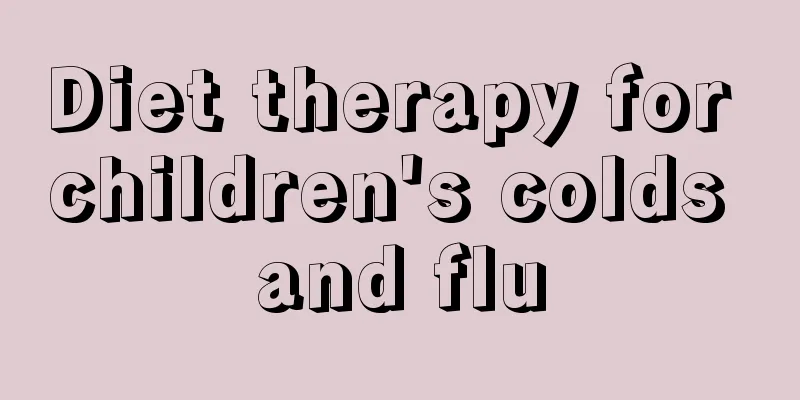Baby's hair is bald at the back

|
A baby is the fruit of a couple's love and is the treasure in the hands of the whole family. The baby's health becomes the top priority of the family. The baby spends most of the day sleeping soon after birth. Newborns sleep up to 20 hours a day, so there will be baldness on the head, especially on the back of the head. Many babies will have a bald circle on the back of their hair after birth. So what causes this? 1. Babies often sweat when they fall asleep, sometimes even profusely, so the pillow will be soaked with sweat. Children may also feel uncomfortable and have increased body movements, including shaking their head from side to side. In this way, the baby's head will often rub against the pillow or bed surface, and the hair will become less. 2. After 2 months, the baby begins to show interest in external sounds and images. Especially for mothers, not only their voice can attract children, but also their appearance can attract children's attention. At this stage, since the child can only lie flat, if he wants to chase his mother, he can only do so by turning his head. If you turn your head left and right frequently, the hair on the back of the head will be rubbed repeatedly, which may cause local hair loss. 3. If the pillow the child uses or the bed he lies on is too hard, it may put pressure on the hair on the pillow, which may result in thinning of hair in that area. 4. There are many reasons for baldness on the back of the head. It may be due to insufficient nutrition intake during pregnancy, or it may be an early manifestation of vitamin D deficiency rickets. However, most baldness on the back of the head is often caused by physiological sweating and frequent friction between the head and the pillow. Nursing and treatment 1. Strengthen care. Choose a breathable, moderately high, and moderately soft pillow for your baby. Always pay attention to your baby's pillow. If you find moisture, replace the pillow in time to ensure that your baby's head is dry. 2. Adjust the temperature. Pay attention to maintaining appropriate room temperature, do not dress or cover your child too much, and reduce your child's daily sweating, especially sweating while sleeping. This is a great way to reduce baldness on the back of your head. 3. Check your baby’s trace elements and vitamin D in time to see if there are any signs of rickets. Follow the doctor's advice and take calcium and vitamin D supplements in a targeted manner. Never take calcium supplements blindly. There are many ways to “supplement calcium”. For example: (1) Sunbathing; this is the most natural way to supplement calcium. Take your baby outdoors to bask in the sun every day. The ultraviolet rays can enable the body to synthesize vitamin D. (2) Supplement vitamin D and calcium. If you encounter a season that is not suitable for going out, you can take additional calcium and vitamin D supplements according to the doctor's advice to meet your body's needs; (3)Dietary supplements. For babies who have already started eating complementary foods, supplementing calcium through a variety of foods is not only beneficial to physical health, but also gives babies the opportunity to try more foods. Although baldness on the back of the head worries parents, it is not difficult to solve: wait patiently for the baby to gradually become stronger. Generally, after 6 months, the child can turn over and raise his head, and even sit up independently. The chance of friction between the headrest and the bed or pillow will be reduced, and the hair will grow again. |
<<: Symptoms of synovitis in babies
>>: What to do if your 10-year-old child has bad breath
Recommend
What to do if your baby has a viral cold
A viral cold in a baby is the most troubling thin...
What symptoms will children with congenital heart disease have?
Although the current medical level is relatively ...
What to do if a 2-year-old child is scalded
When a baby is 2 years old, he is very curious ab...
What are the nutritional breakfast recipes for primary school students?
Now the living standard is gradually improving, s...
What are the intellectual development standards for a 9-month-old baby?
The motor skills of a 9-month-old baby have becom...
What is the disease of a 2-year-old child with fever and convulsions?
Children are very susceptible to bacterial infect...
How to solve the problem of baby hair loss
In fact, there are many things that need to be pa...
Nursing knowledge of pediatric fractures
Children are naturally curious and like to move a...
Why does my baby’s knee hurt?
Because babies are still very young, they do not ...
What causes numbness in children's legs?
Children usually run and jump around and are full...
Baby has fever and turns pale
It is quite common in life that the baby has a fe...
Introduction to myocardial injury in children
After many children are born, it is difficult for...
What should I do if my child always loses his temper?
Nowadays, families often have only one child, so ...
First aid and nursing care for children with high fever convulsions
When children are very young, if adults do not ta...
The child coughs and has a squeaky throat
During the growth process of a child, some phenom...









